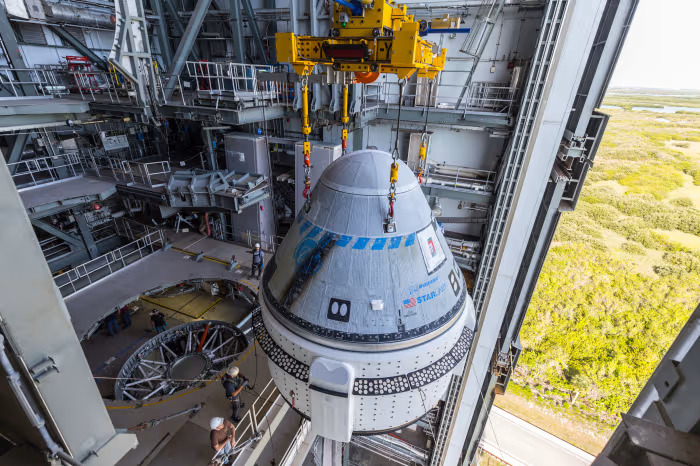


Boeing is nearing a significant breakthrough in space exploration despite numerous setbacks. The aerospace giant is poised to launch its Starliner capsule with astronauts aboard for the first time, a pivotal trial flight to the International Space Station (ISS) under NASA’s program of relying on U.S. companies for astronaut transport post-space shuttle era.
While SpaceX, led by Elon Musk, has achieved nine successful crewed missions since 2020, Boeing has faced challenges, completing only two uncrewed test flights. Mark Nappi, Boeing’s program manager, acknowledges the desire for further progress with the Starliner program but remains hopeful about the imminent crewed mission.
Scheduled for Monday night, the launch, if successful, will see NASA alternating between Boeing and SpaceX for future ISS missions. The Starliner, with its distinctive white exterior adorned with black and blue accents, stands around 10 feet tall and 15 feet in diameter, capable of carrying up to seven passengers, though NASA’s missions typically involve four astronauts.
Named as a tribute to Boeing’s aviation legacy, echoing its earlier Stratoliner and current Dreamliner aircraft, the crew for this crucial test flight comprises veteran NASA astronauts Butch Wilmore and Sunita Williams. They stepped in after original crew members withdrew due to project delays, having been actively engaged in Starliner’s development and expressing confidence in its readiness for space travel.
This mission, launching from Cape Canaveral Space Force Station atop United Launch Alliance’s Atlas V rocket, is historically significant as it marks the first time astronauts will launch on an Atlas rocket since John Glenn’s orbit in 1962.
With heightened caution emphasized by ULA CEO Tory Bruno for human spaceflight, the mission’s success is paramount. Upon docking at the ISS for eight days of checkouts, Starliner will return to Earth, potentially landing in New Mexico or elsewhere in the American West.
This mission serves as a direct comparison between Boeing’s Starliner and SpaceX’s Dragon capsules, both designed for autonomy and reusability but differing in control interfaces and landing methods.
NASA’s investment of over $4 billion in Boeing for Starliner development, compared to $2.6 billion for SpaceX’s crew capsule, underlines Boeing’s commitment to completing six additional ISS trips by 2030 and exploring options to offer a fifth seat to private clients.
As Boeing readies for this historic flight, the aerospace community eagerly awaits the successful integration of another dependable vehicle for human space exploration, showcasing not only a significant milestone for Boeing but also NASA’s dedication to advancing space travel through commercial partnerships.